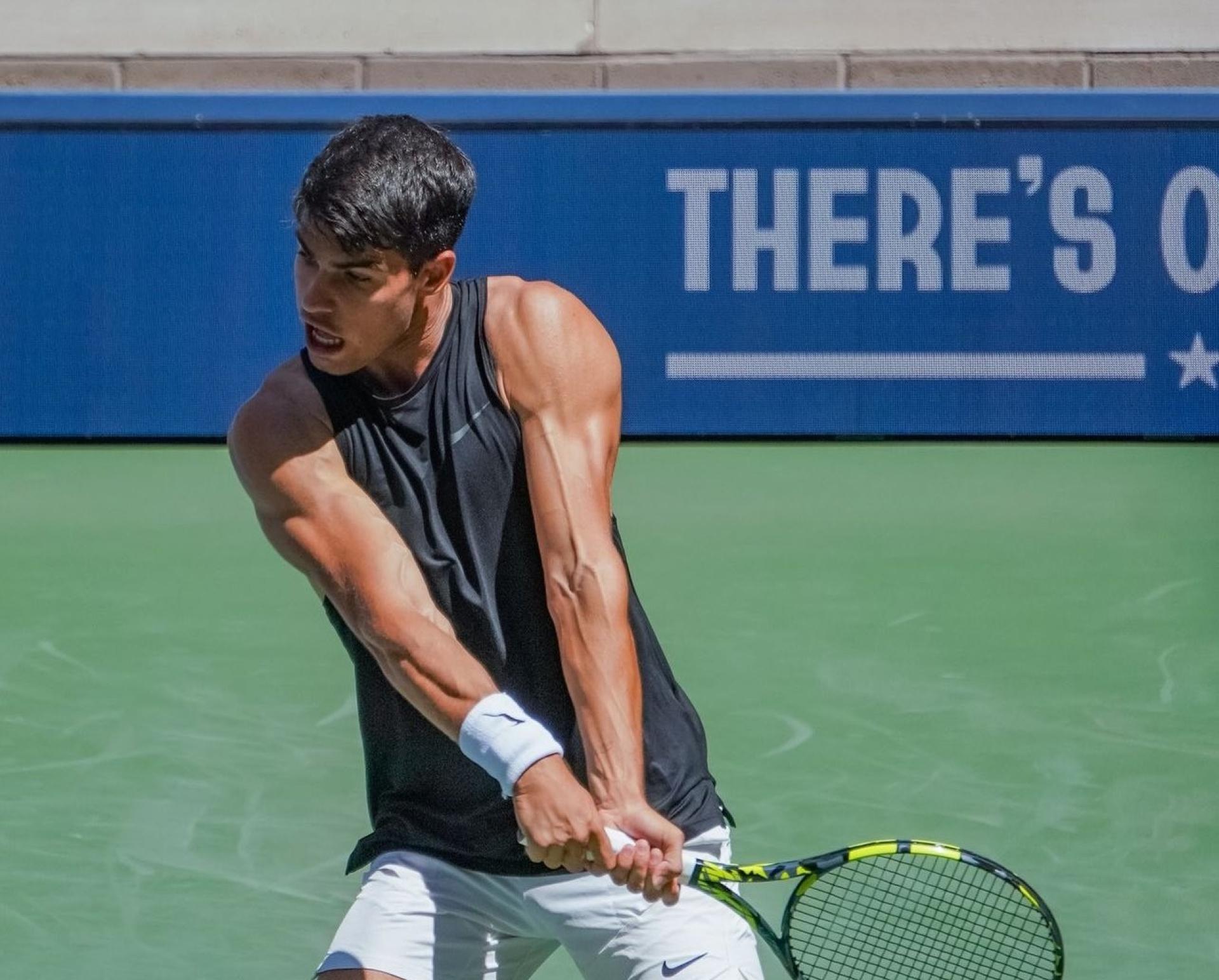Carlos Alcaraz, the Spanish tennis prodigy who took the ATP world by storm, has captured attention not only for his skills on the court but also for his dramatic body transformation. Fans and commentators alike have noticed how his physique evolved from a slender teenager into a powerful, muscular athlete — a change that went hand in hand with improved stamina and performance.
What sparked this change? How did Alcaraz manage such a significant weight loss and muscle gain at a young age? And what does this mean for his career going forward?

The Skinny Prodigy: Early Career and Initial Physique
When Alcaraz first appeared on the professional scene, his slight frame raised eyebrows. He was often described as “skinny” or “lean,” lacking the muscular build typical of elite tennis players. While his talent was undeniable, the question lingered: Could he handle the physical demands of the sport at the highest level?
He once admitted in an interview, “I knew I had to get stronger if I wanted to compete with the best.” This realization marked the beginning of his journey toward a more robust and athletic body.
The Turning Point: Diet Changes and Focus on Health
Alcaraz’s transformation wasn’t just about hitting the gym harder; it started in the kitchen. Influenced by tennis legends like Novak Djokovic, he adopted a gluten-free diet that drastically changed his energy levels and body composition.
He stated, “I switched to eating more fish, cutting down on red meat, and avoiding gluten after tests showed it affected me negatively.”
This wasn’t a short-term fix. For over a year, Alcaraz remained strict with his diet, even during tournaments and travels. His regimen involved:
-
High protein intake, mainly from fish
-
Plenty of vegetables and fruits
-
Gluten-free pasta and grains for sustained energy
-
Avoiding processed foods and excess sugars
Could such a diet be the secret behind his rapid muscle gain and fat loss?
Training Transformation: From Lean to Muscular
Complementing his new diet, Alcaraz revamped his training routine. His workouts shifted focus from just endurance to strength training and muscle building, while maintaining agility and speed.
He explained, “Adding muscle wasn’t about looking good; it was about being more explosive and lasting longer in matches.”
His body started to show the results. Photos from 2021 to 2023 reveal a clear increase in muscle mass, especially in his arms and shoulders, transforming him into a more physically imposing player.
Emotional Struggles and Setbacks
Despite the rapid gains, the journey wasn’t free of challenges. Alcaraz admitted to struggling with self-doubt during the transition. “Sometimes I wondered if the weight gain would slow me down, or if I was losing the natural speed I had.”
Yet, he kept pushing, fueled by the desire to be the best version of himself. His persistence paid off as his game improved alongside his physique.
The Impact on Career and Performance
The weight loss combined with muscle gain helped Alcaraz in crucial ways:
-
Improved stamina to endure long matches
-
Enhanced power for faster serves and stronger groundstrokes
-
Greater mental confidence on court
In his own words, “I feel more complete as a player. My body supports my game better now.”
The results speak for themselves. Alcaraz became the youngest ATP world number one, a testament to how his physical transformation fueled his competitive rise.
What Can We Learn from Alcaraz’s Weight Loss Journey?
Alcaraz’s story teaches us that weight loss and fitness aren’t about extremes. It’s a balanced approach combining diet, training, and mental toughness.
He advises, “Listen to your body. Find what works for you. And never rush the process.”
FAQs About Alcaraz Weight Loss
How much weight did Carlos Alcaraz lose or gain during his transformation?
Alcaraz shifted from a very lean frame to a stronger, more muscular physique. Exact numbers vary, but his body fat decreased significantly while muscle mass increased.
What diet does Carlos Alcaraz follow?
He follows a gluten-free diet focused on fish, vegetables, gluten-free pasta, and avoiding red meat and processed foods.
Did Carlos Alcaraz gain muscle or just lose fat?
He primarily gained muscle mass to improve strength and power, alongside losing excess fat to enhance agility.
How did the weight loss affect Alcaraz’s tennis performance?
His improved physique increased stamina, power, and on-court confidence, contributing to his rise to world number one.
Is Alcaraz’s diet and training suitable for amateur athletes?
While his regimen is tailored for professional tennis, the principles of balanced nutrition and functional training can benefit many athletes.